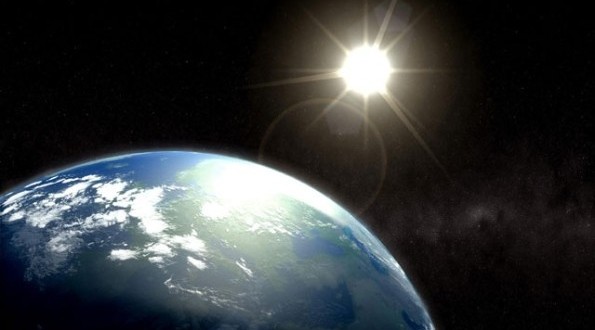NASA Administrator Charles Bolden listens to a discussion of “the scientific and technological roadmap that will lead to the discovery of potentially habitable worlds among the stars” July 14, 2014 in Washington, DC. Most prominent among the methods NASA will search the universe for habitable exoplanets will be the deployment of the James Webb Space Telescope, with a mirror of 21 feet, scheduled to be launched in 2018.
“Finding Earth’s twin, that’s kind of the holy grail,” said John Grunsfeld, an astronaut who helped repair the Hubble Space Telescope in 2009 and is now an associate administrator at NASA, according to CNN.com.
NASA’s mission to study planetary systems around other stars began with ground-based observations, and then moved to space-based devices, like the Hubble Space Telescope, the Kepler Space Telescope, and the Spitzer Space Telescopes.
Modern telescopes can look at many different stars and ell if they have one or more orbiting planets or if they are the proper distance away from the star to have liquid, which is the main ingredient to life.
Scientists have made “stellar” strides in the past few years towards proving that we aren’t alone.
“We already know that our galaxy has at least 100 billion planets, and we didn’t know that five years ago,” said Matt Mountain, director of the Space Telescope Science Institute in Maryland, according to CNN.com.
The James Webb telescope will be a traveling 930,000 miles from our planet, which is around four times the distance between the Earth and the moon.
Webb will launch sometime in 2018.
Scientists know where every single star is within 200 light years of the Sun. They believe if they follow this map of stars, eventually they’ll find a multitude of new planets.
“Every star in the sky is a sun, and if our sun has planets, we naturally expect those other stars to have planets also, and they do,” said Sara Seager, professor of planetary science and physics at the Massachusetts Institute of Technology in Cambridge, according to CNN.
Finding small planets the size of Earth is difficult, in part because they produce fainter signals, said Dave Gallagher, director for astronomy and physics at NASA’s Jet Propulsion Laboratory.
He likened it to spotting a firefly beside a searchlight.
“Sometime in the near future, people will be able to point to a star and say, ‘that star has a planet like Earth’,” said Seager. “Astronomers think it is very likely that every single star in our Milky Way galaxy has at least one planet.”
Agencies/Canadajournal
 Canada Journal – News of the World Articles and videos to bring you the biggest Canadian news stories from across the country every day
Canada Journal – News of the World Articles and videos to bring you the biggest Canadian news stories from across the country every day



